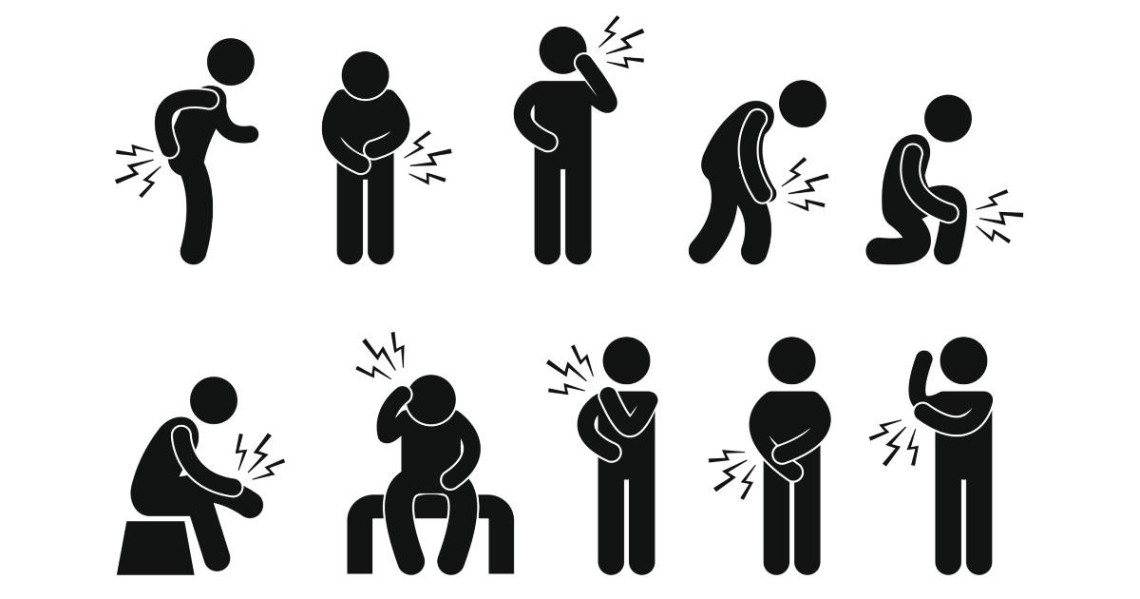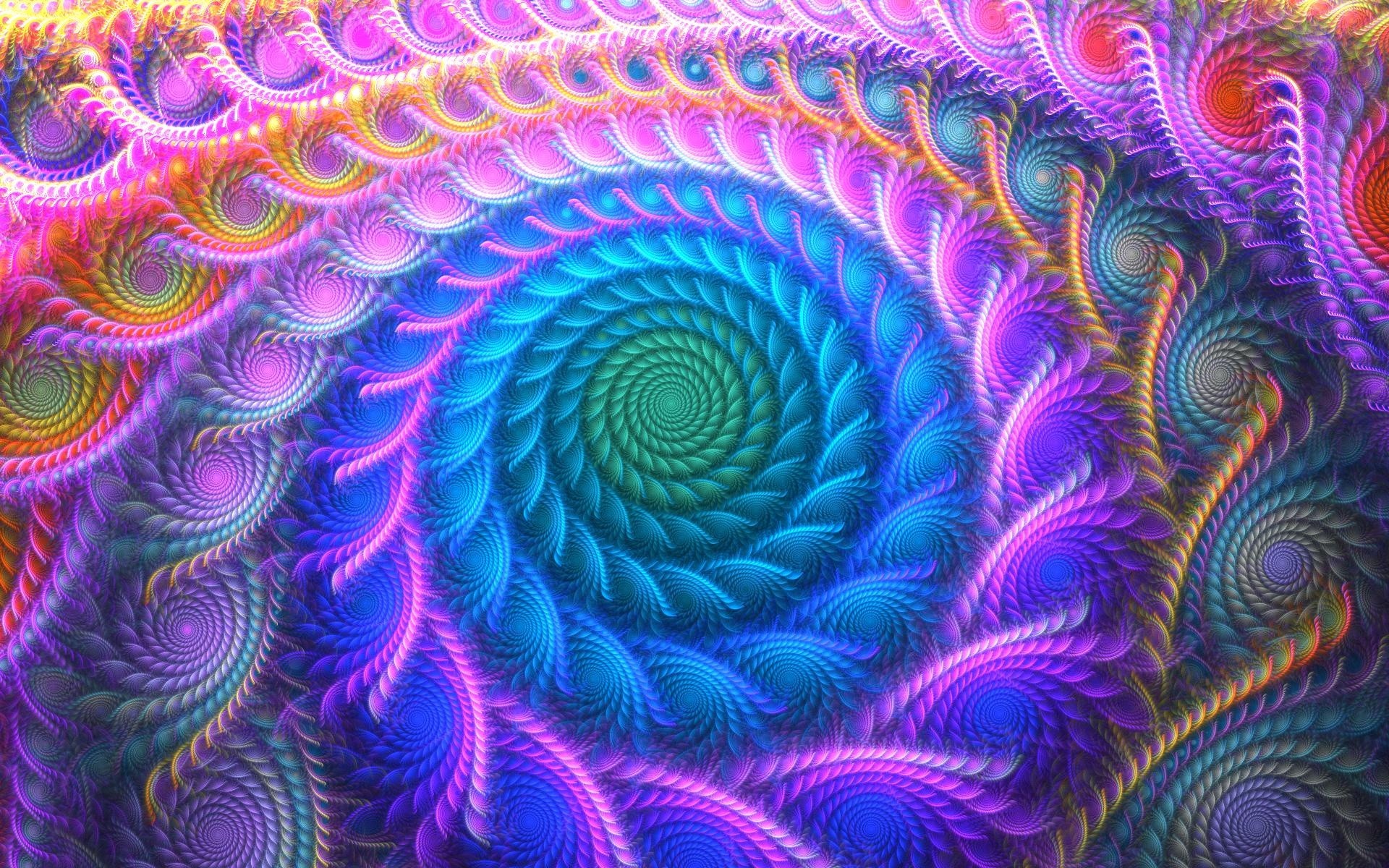The Concept of Acid Dreams
What Are Acid Dreams?
An acid dream, also known as a bad trip or an adverse psychedelic experience, refers to a nightmarish dream state that occurs after ingesting a powerful hallucinogenic substance such as LSD (lysergic acid diethylamide) or other similar psychoactive compounds.
Acid dreams can be characterized by intense feelings of anxiety, fear, and paranoia, often accompanied by vivid and disturbing visual images. These dreams may feel incredibly real, causing the person to question their own perceptions of reality.
The concept of acid dreams was popularized in the 1960s counterculture movement, particularly through the works of Timothy Leary, a pioneer in the field of psychedelic research. According to Leary, an acid dream is not just a dream but a glimpse into one’s subconscious mind, revealing hidden fears, desires, and unresolved emotional conflicts.
Acid dreams can manifest in various ways, including experiencing intense physical sensations such as body distortions or being trapped in claustrophobic environments. They may also involve encountering symbolic or archetypal figures that embody deep-seated emotions and psychological complexes.
The significance of acid dreams lies in their ability to provide a unique window into the subconscious mind. By analyzing and interpreting these dream experiences, individuals can gain insight into their own psyche, helping them confront unresolved emotional issues and develop greater self-awareness.
However, it’s essential to note that acid dreams are not always indicative of mental health problems or underlying psychological issues. While they may be a challenging experience, they can also serve as an opportunity for personal growth and spiritual exploration.
The study of acid dreams has led to a greater understanding of the human mind’s capacity for both creative expression and symbolic communication. By exploring the realms of the subconscious, individuals can tap into their deepest desires, fears, and motivations, ultimately leading to a more profound understanding of themselves and the world around them.
As with any form of altered consciousness, it’s crucial to approach acid dreams with respect, caution, and a willingness to confront one’s own psychological complexities. By embracing this aspect of human experience, individuals can unlock new levels of self-awareness and cultivate greater emotional intelligence.
Acid dreams are a type of nightmare that involves feelings of intense fear, anxiety, and helplessness, often triggered by a substance called LSD (lysergic acid diethylamide).
Acid dreams are a type of nightmare that involves intense and vivid experiences, often triggered by the use of LSD (lysergic acid diethylamide). This powerful hallucinogenic substance can alter perception, thoughts, and feelings, leading to a range of unusual and terrifying dream scenarios.
The term “acid” in this context refers to LSD, which is a synthetic compound that affects the brain’s chemistry and creates a sense of detachment from reality. When users experience acid dreams, they may feel as if they are trapped in a never-ending nightmare, where their deepest fears and anxieties manifest in vivid and disturbing ways.
Acid dreams often involve themes of loss of control, confinement, or being pursued by menacing figures. The sense of helplessness and vulnerability is typically overwhelming, making it difficult for the dreamer to escape from the terror or find peace.
The intense feelings of fear, anxiety, and dread that characterize acid dreams are a result of the brain’s attempt to process the unusual and unpredictable effects of LSD on the mind. This can lead to a distorted sense of reality, making it challenging for the dreamer to distinguish between what is real and what is imagined.
The frequency and intensity of acid dreams vary greatly among individuals who use LSD. While some people may experience intense and disturbing nightmares, others may have more benign or even positive experiences during their sleep.
It’s worth noting that the concept of acid dreams has also been explored in popular culture, such as in literature and film. The idea of a character experiencing a terrifying and surreal nightmare under the influence of LSD can add depth and complexity to a story, making it more thought-provoking and engaging for the audience.
Overall, acid dreams are a unique and fascinating phenomenon that offers insights into the human brain’s capacity for creative expression and the effects of psychedelic substances on the mind. While they can be unsettling and disturbing, acid dreams also have the potential to inspire creativity, foster self-awareness, and promote personal growth.
Scientific Explanation
An acid dream, also known as a Lucid dream or oneiric experience, is a type of vivid and often disturbing dream that occurs during the rapid eye movement (REM) stage of sleep. This phenomenon is characterized by a sense of intense anxiety, fear, or discomfort, accompanied by a feeling of being trapped in a nightmarish scenario.
During an acid dream, the brain’s neurotransmitters, such as serotonin and norepinephrine, are released in excessive amounts, which can lead to increased heart rate, blood pressure, and respiration. This surge in chemicals can also cause vivid visuals, including disturbing imagery and hallucinations.
The concept of acid dreams is often linked to the idea of psychedelic experiences, where the boundaries between reality and fantasy are blurred. In this state, the dreamer may experience a sense of detachment from their body and surroundings, as well as altered perceptions of time and space.
Research suggests that acid dreams may be related to various psychological and physiological factors, including stress, anxiety, and certain medications or substances that can induce vivid dreams. Additionally, sleep disorders such as sleep paralysis and night terrors have been linked to acid dreams.
The scientific community has also proposed several theories to explain the mechanisms behind acid dreams, including the idea of a “stress-induced state”, where the brain’s response to stress triggers an excessive release of neurotransmitters. Another theory suggests that acid dreams may be caused by an imbalance in the body’s sleep-wake homeostasis.
While the exact causes and mechanisms behind acid dreams are not yet fully understood, research continues to unravel the mysteries of this phenomenon. By studying acid dreams, scientists hope to gain a better understanding of the brain’s complex processes during sleep and wakefulness.
In summary, an acid dream is a type of vivid and often disturbing dream that occurs during REM sleep, characterized by intense anxiety or discomfort, vivid visuals, and altered perceptions. The scientific community continues to study this phenomenon to understand its causes and mechanisms, with potential applications in the fields of psychology, neuroscience, and sleep medicine.
Research conducted at Harvard University’s McLean Hospital suggests that the brain’s emotional centers, particularly the amygdala, are responsible for processing emotions during an acid dream. This can lead to feelings of intense fear or anxiety.
The concept of acid dreams refers to a specific type of dream that occurs during intense emotional states, particularly during the use of psychedelic substances such as LSD.
Acid dreams are characterized by their vivid and often disturbing imagery, which can evoke feelings of fear, anxiety, or unease in the individual experiencing them.
Research conducted at Harvard University’s McLean Hospital suggests that the brain’s emotional centers, particularly the amygdala, are responsible for processing emotions during an acid dream.
The amygdala is a small almond-shaped structure located deep within the brain’s temporal lobe, and it plays a crucial role in detecting and responding to threats or perceived dangers.
During an acid dream, the amygdala can become overactive, leading to an intense emotional response that can manifest as fear, anxiety, or even panic.
The experience of an acid dream can be so vivid and real that it can be difficult for individuals to distinguish between their dreams and reality.
Acid dreams often involve themes of loss, separation, or death, which can be particularly disturbing for those who have experienced trauma or stress in the past.
In some cases, acid dreams can also be associated with feelings of euphoria or excitement, but these are typically short-lived and give way to more intense negative emotions as the dream progresses.
The research conducted at McLean Hospital suggests that individuals who experience acid dreams may have altered brain chemistry, particularly in the serotonin system, which plays a role in regulating mood and emotional response.
This altered brain chemistry can lead to changes in how the brain processes emotions during sleep, resulting in the intense fear or anxiety associated with acid dreams.
Causes of Acid Dreams:
- The use of psychedelic substances such as LSD
- Altered brain chemistry, particularly in the serotonin system
- Anxiety or stress, which can affect how the brain processes emotions during sleep
How to Manage Acid Dreams:
- Practice relaxation techniques, such as deep breathing or meditation, to help manage anxiety and reduce the intensity of acid dreams
- Avoid using psychedelic substances if you experience frequent or intense acid dreams
- Seek professional help from a therapist or counselor if your acid dreams are causing significant distress or interfering with daily life
The Symbolism Behind Acid Dreams
Common Themes and Symbols
Acid dreams are a phenomenon where individuals report vivid and intense experiences, often with themes of turmoil, confusion, and disorientation. This type of dream is commonly associated with the use of psychoactive substances, such as LSD or other hallucinogens, but can also occur naturally without any external influence.
At its core, an acid dream is a manifestation of the subconscious mind’s attempt to process and integrate challenging emotions, experiences, or memories. The symbolic language used in these dreams is often rich in imagery, colors, and textures that may be open to multiple interpretations.
One common theme present in acid dreams is the idea of disintegration or fragmentation. This can manifest as images of bodily dismemberment, crumbling buildings, or shattered mirrors. These symbols suggest a sense of identity crisis, where the dreamer feels disconnected from their own self and struggles to reconcile conflicting aspects of their personality.
Another prevalent theme is the experience of being trapped or confined, often in spaces that are labyrinthine or impossible to escape. This may represent feelings of being overwhelmed by responsibilities, trapped in a situation, or struggling with internal conflicts. The dreamer’s attempts to navigate these environments can symbolize their efforts to find solutions or break free from emotional entrapments.
Critical to understanding the symbolism behind acid dreams is recognizing that they often defy linear narratives and instead present non-sequiturs, juxtapositions, and other unconventional storytelling techniques. This non-linear structure reflects the chaotic nature of the subconscious mind as it tries to process and integrate complex emotions and experiences.
The colors used in these dreams can also be highly symbolic, with red often representing passion, anger, or intensity; blue frequently signifying calmness, trust, or wisdom; and purple symbolizing spirituality, creativity, or luxury. These color associations are not absolute but rather provide a general framework for interpreting the dreamer’s emotional state.
Textures, too, can play a crucial role in acid dreams. For instance, smooth textures may indicate feelings of serenity or contentment, while rough ones might symbolize anxiety or turmoil. The sense of touch and bodily sensations in these dreams often reflects the dreamer’s current emotional state and their connection to their physical body.
The use of archetypes in acid dreams can also be highly symbolic. Archetypes are recurring themes or images that appear across different cultures and time periods, such as the Mother figure, the Trickster, or the Hero. These symbols represent universal human experiences and emotions, serving as a common language through which the dreamer’s subconscious communicates its message.
Furthermore, acid dreams often employ metaphorical language to convey complex ideas and emotions in a way that bypasses rational thinking. This means that the literal interpretation of these dreams is not always relevant or possible; instead, they require a deeper, more intuitive understanding of the symbolism involved.
In conclusion, acid dreams are a window into the subconscious mind’s attempt to process and integrate challenging experiences, emotions, and memories. The symbolic language used in these dreams is rich in imagery, colors, textures, and archetypes that can be open to multiple interpretations. Understanding this symbolic language requires a willingness to engage with one’s own subconscious, embracing the non-linear structure and unconventional storytelling techniques of the dream world.
The symbolism behind acid dreams is complex and varied, but common themes include feelings of loss of control, separation from others, and a sense of impending doom. The dream may also feature images of death or dying, which can be particularly distressing.
The symbolism behind acid dreams is multifaceted and open to interpretation, reflecting the complex and often unsettling nature of these experiences. At its core, an acid dream is a manifestation of the subconscious mind’s ability to process and respond to intense emotions and psychological turmoil.
One of the primary themes present in acid dreams is the sense of loss of control. This can manifest as being trapped or confined in some way, unable to escape or move freely. In this context, the dreamer may feel a deep-seated anxiety or frustration that they are unable to express or act on.
Another common theme is separation from others. Acid dreams often feature images of isolation or disconnection, where the dreamer is separated from loved ones, friends, or community. This can be a reflection of feelings of loneliness, rejection, or emotional disconnection in waking life.
A sense of impending doom or catastrophe is also prevalent in acid dreams. The dreamer may experience vivid images of destruction, chaos, or loss, which can evoke strong emotions and a feeling of intense anxiety. In this context, the subconscious mind may be processing unresolved trauma, fears, or anxieties from the past.
Images of death or dying are another common feature in acid dreams. These can be particularly distressing for dreamers, as they often tap into deep-seated fears and anxieties about mortality. However, it’s essential to note that these images do not necessarily reflect an impending physical demise, but rather may serve as a symbolic representation of emotional or psychological loss.
It’s also worth noting that acid dreams can be triggered by various factors, including the use of psychedelic substances, stress, anxiety, and sleep deprivation. In some cases, acid dreams can provide insight into unresolved issues or unconscious motivations, serving as a catalyst for personal growth and self-awareness.
Key Factors Contributing to Acid Dreams:
- Subconscious Processing of Emotions: Acid dreams often reflect the subconscious mind’s ability to process and respond to intense emotions and psychological turmoil.
- Loss of Control: Feeling trapped, confined, or unable to escape can manifest as a deep-seated anxiety or frustration that cannot be expressed or acted on.
- Separation from Others: Images of isolation or disconnection can reflect feelings of loneliness, rejection, or emotional disconnection in waking life.
- Impending Doom or Catastrophe: Vivid images of destruction, chaos, or loss can evoke strong emotions and a feeling of intense anxiety.
- Images of Death or Dying: These can be particularly distressing for dreamers, but may serve as a symbolic representation of emotional or psychological loss rather than an impending physical demise.
Conclusion:
The symbolism behind acid dreams is complex and varied, reflecting the multifaceted nature of these experiences. By understanding the common themes present in acid dreams, individuals can gain insight into their subconscious mind’s processing of emotions, anxiety, and unresolved issues. This self-awareness can serve as a catalyst for personal growth, self-reflection, and emotional healing.
Interpreting Acid Dreams
Coping Mechanisms and Support
The experience of having an acid dream can be unsettling, especially when one is unsure about its meaning. It is essential to understand that acid dreams are often associated with LSD-induced psychosis, but not everyone who has such a dream has ingested the substance.
In general, acid dreams revolve around themes of self-discovery, fear, and intense emotions. They can manifest as a mix of vivid imagery, surreal situations, and uncomfortable feelings. To interpret the meaning behind such dreams, it’s crucial to reflect on your personal experiences, emotional state, and unconscious thoughts.
Some common characteristics of acid dreams include:
- Vivid colors that are often more intense than those in real life;
- Surreal or illogical scenarios that defy the laws of reality;
- Fear, anxiety, and a sense of impending doom or danger.
To cope with acid dreams, maintaining a clear distinction between reality and fantasy is essential. Some strategies to help you differentiate include:
- Grounding techniques, such as focusing on your five senses or engaging in physical activities;
- Cognitive restructuring, which involves challenging negative thoughts and replacing them with more balanced and constructive ones;
- Emotional regulation, which can involve journaling, meditation, or talking to a trusted friend or therapist.
If you are experiencing recurring acid dreams or find it difficult to cope, consider seeking support from a mental health professional. They can help you explore the underlying causes of your dreams and develop effective coping strategies tailored to your needs. Additionally, support groups, both online and offline, can provide a safe space for sharing experiences and gaining insight into others’ perspectives.
It is also worth noting that acid dreams can be an opportunity for self-reflection and growth. By exploring the themes and emotions present in such dreams, you may uncover hidden aspects of yourself or gain new insights into your thoughts, behaviors, and desires.
Ultimately, coping with acid dreams requires patience, understanding, and a willingness to confront uncomfortable emotions. By employing effective coping mechanisms and seeking support when needed, you can develop the tools necessary to navigate these intense experiences and emerge stronger and more self-aware as a result.
If you experience an acid dream, it is essential to seek support from friends, family, or mental health professionals. Engaging in relaxation techniques such as meditation or deep breathing exercises can help calm the mind and reduce anxiety.
Interpreting acid dreams requires a comprehensive understanding of their underlying symbolism and meaning. When experiencing an acid dream, it’s essential to recognize that these dreams often reflect unresolved issues, emotions, or psychological concerns within oneself.
Here are some common themes and symbols associated with acid dreams:
- Fear and anxiety: Acid dreams can manifest as a reflection of deep-seated fears and anxieties. These may arise from past experiences or unresolved conflicts, and it’s crucial to address these underlying concerns.
- Loss of control: Feeling trapped or powerless in an acid dream can represent feelings of helplessness or loss of control in waking life. This may stem from situations like a breakup, job insecurity, or health issues.
- Mortality and death: Acid dreams often feature themes of mortality or death, which can symbolize the fear of change, transformation, or letting go of old patterns.
- Lack of identity: Feeling disoriented or disconnected in an acid dream may indicate confusion about one’s sense of self or purpose. This could be due to major life changes, such as a move, job change, or relationship shift.
To better understand your acid dreams and their significance, consider the following steps:
- Keep a dream journal: Writing down your dreams as soon as you wake up can help you identify recurring themes, symbols, or emotions. This will enable you to tap into your subconscious mind and gain insights.
- Explore emotional connections: Reflect on how you feel when experiencing acid dreams. Are there specific emotions or sensations associated with these dreams? Understanding the emotional undertones can help you decode their meaning.
- Connect with others: Talking to friends, family members, or mental health professionals about your acid dreams can provide new perspectives and insights. Sharing your experiences can also help you process and release pent-up emotions.
In addition to exploring the underlying causes of acid dreams, relaxation techniques like meditation, deep breathing exercises, and progressive muscle relaxation can help calm the mind and reduce anxiety. Engaging in mindfulness practices can assist you in managing stress and fostering a more positive outlook on life.
- Bar Dream Meaning: What Does A Bar Mean In Your Dream? - September 16, 2024
- Ballet Shoes Dream Meaning: What Do Ballet Shoes Mean In Your Dream? - September 14, 2024
- Brown Dog Dream Meaning: What Does A Brown Dog Represent In Your Dream? - September 13, 2024







